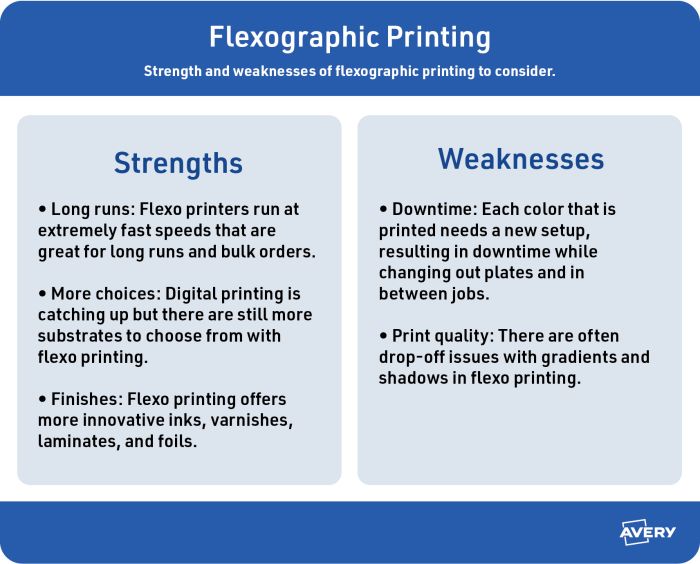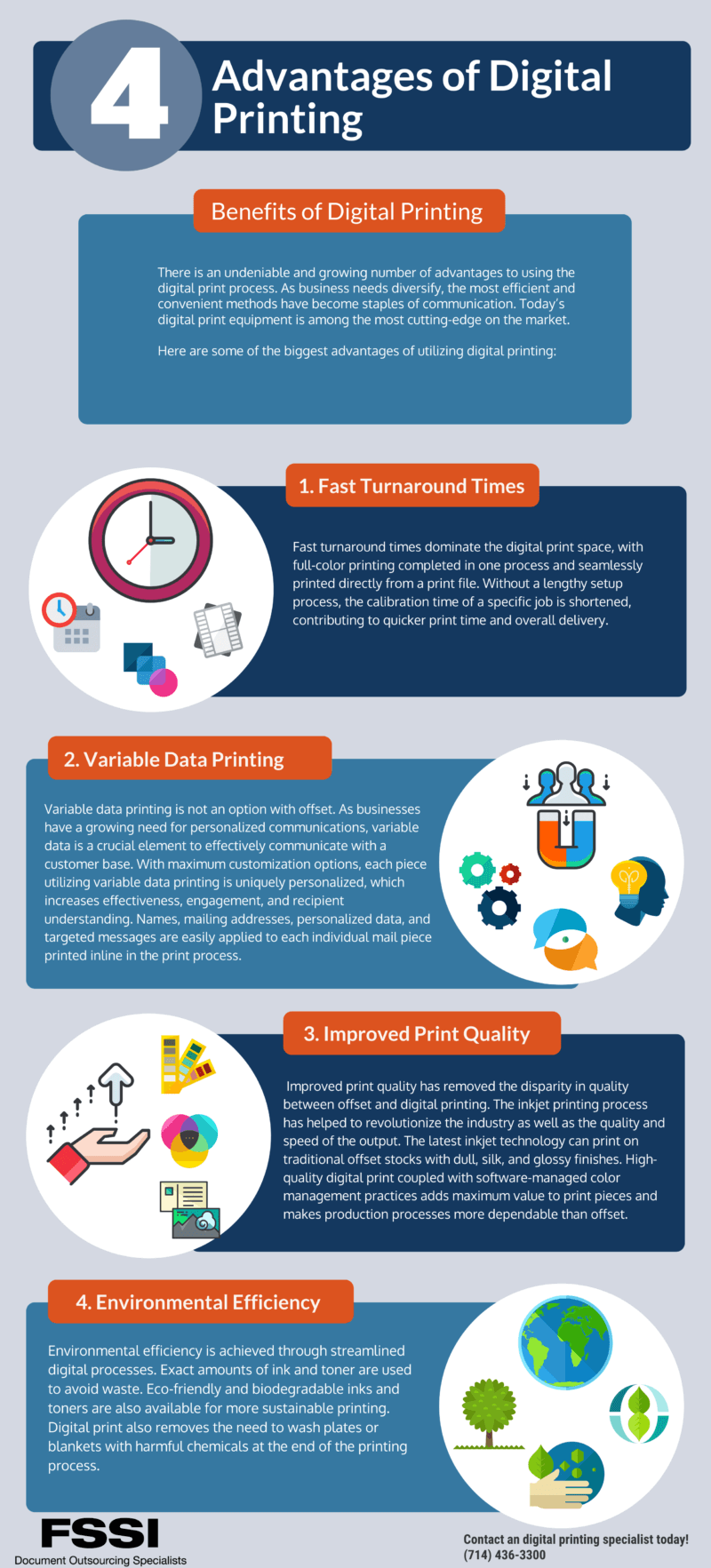7 Easy Facts About Digital Printing Explained
7 Easy Facts About Digital Printing Explained
Blog Article
Not known Facts About Digital Printing
Table of ContentsRumored Buzz on Digital PrintingLittle Known Questions About Digital Printing.Digital Printing for BeginnersHow Digital Printing can Save You Time, Stress, and Money.Digital Printing Fundamentals ExplainedThe Facts About Digital Printing Uncovered
Variable data printing, such as direct mail with customized codes and addresses, is preferably matched for digital printing. Digital quick printing only needs 4 actions of design, review, printing and binding to obtain whatever done. Digital fast printing has an exceptional benefit: print on need.According to PMMI, electronic printing allows brands and producers to respond quickly to customer demands while enhancing the supply chain, reducing warehousing price and waste, and delighting in faster time to market. That all sounds fantastic, but just how does this innovation do all that? The major differentiator of these innovations is that there are no set up fees and no plates with electronic printing.
See This Report about Digital Printing
According to Wikipedia, the biggest distinction in between electronic printing and standard techniques such as lithography, flexography, gravure, or letterpress - Digital Printing is that there is no requirement to replace printing plates in electronic printing, whereas in these analog printing approaches home plates are repeatedly changed. This results in quicker turn-around time and reduces expense when using electronic printing.
Quick manufacturing means getting your product to market faster. It also suggests it's much easier and faster to make modifications later on, when you alter a dish, add a SKU, or produce seasonal product packaging. Digital printing is very flexible, so it's simple to make changes to the plan style swiftly. Everything returns to home plates.
A lot more stock can indicate even more waste down the road. With traditional printing techniques, short-run printing is just not possible. Due to the fact that a terrific design can make or break your product, electronic printing consistently develops premium, clear and colorful graphics each time. Digital printing on versatile bags includes the intense, vibrant, and accurate graphics that virtually bid consumers to connect and touch them.
Digital printing is the process of printing digital-based pictures straight onto a selection of media substrates. There is no requirement for a printing plate, unlike with offset printing. Digital documents such as PDFs read here or desktop computer publishing data can be sent straight to the digital printing machine to publish theoretically, photo paper, canvas, fabric, synthetics, cardstock and various other substrates.
The Ultimate Guide To Digital Printing
According to PMMI, digital printing permits brands and makers to react swiftly to customer demands click here for more info while boosting the supply chain, reducing warehousing expense and waste, and appreciating faster time to market. That all noises excellent, yet how does this technology do all that? The significant differentiator of these modern technologies is that there are no set up fees and no plates with digital printing.
This results in quicker turnaround time and lowers expense when making use of digital printing.

The Facts About Digital Printing Revealed
With traditional printing techniques, short-run printing is just not possible. Since a terrific style can make or damage your item, electronic printing constantly develops high-grade, clear and vibrant graphics each time.

According to PMMI, electronic printing enables brands and producers to respond rapidly to client needs while improving the supply chain, reducing warehousing price and waste, and enjoying faster time to market. That all sounds terrific, however how does this technology do all that? The significant differentiator of these modern technologies is that there are no set get more up costs and no plates with electronic printing.
The Best Guide To Digital Printing
According to Wikipedia, the best difference in between electronic printing and typical approaches such as lithography, flexography, gravure, or letterpress is that there is no need to replace printing plates in digital printing, whereas in these analog printing approaches the plates are continuously replaced. This results in quicker turn-around time and decreases cost when making use of electronic printing.
Fast manufacturing implies obtaining your item to market faster. It additionally indicates it's less complicated and faster to make changes later on, when you transform a recipe, include a SKU, or develop seasonal packaging. Digital printing is extremely versatile, so it's very easy to make adjustments to the plan layout swiftly. All of it returns to the plates.

The 45-Second Trick For Digital Printing
Digital printing is the procedure of printing digital-based images directly onto a variety of media substrates. There is no requirement for a printing plate, unlike with offset printing. Digital documents such as PDFs or desktop computer publishing data can be sent out directly to the digital printing press to publish theoretically, image paper, canvas, textile, synthetics, cardstock and other substratums.
Report this page